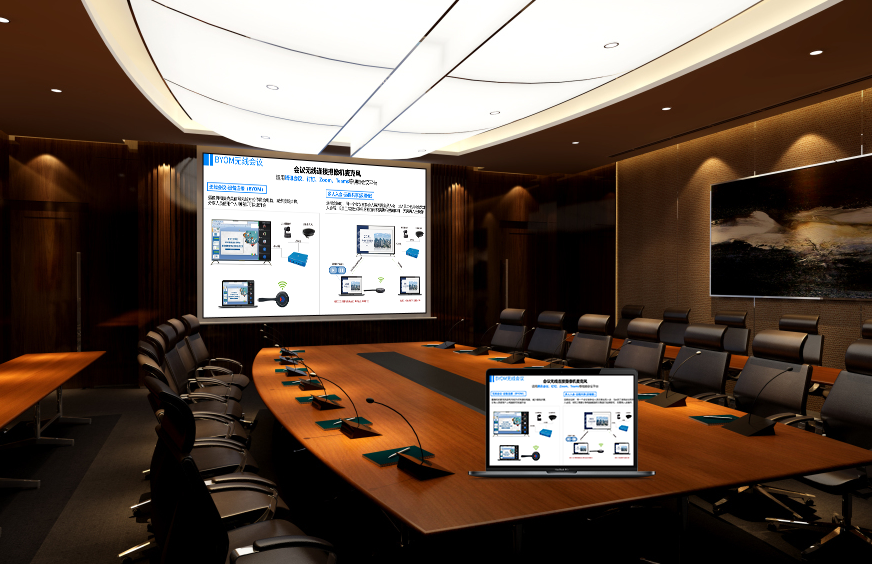WiDi: An Efficient Connector in Wireless Screen Mirroring
In the evolving landscape of wireless screen mirroring technology, WiDi (Wireless Display) stands as a crucial bridge connecting devices to large displays, thanks to its unique technical advantages. Developed by Intel and based on Wi-Fi Direct technology, WiDi enables compatible hardware to achieve direct wireless screen mirroring without the need for a router, bringing efficient and convenient experiences to offices, education, home entertainment, and more.
I. Technical Characteristics: Building Stable and Efficient Wireless Connections
(I) Based on Wi-Fi Direct, No Network Dependency
The biggest feature of WiDi technology is that it does not rely on traditional wireless network routers. Instead, it establishes a peer-to-peer wireless connection between devices using Wi-Fi Direct. This means that in environments without public Wi-Fi, such as temporary outdoor meetings or on-site teaching, WiDi-enabled devices can still quickly establish a connection and mirror content to a large screen. For example, during an outdoor product promotion event, a staff member’s laptop can directly connect to a portable projector on-site via WiDi to display product information, eliminating dependence on a network environment and ensuring the smooth running of the event.
(II) High-Definition Transmission, Restoring Content’s True Quality
WiDi supports high-definition video transmission, capable of achieving 1080P or even 4K picture quality. During transmission, it employs advanced encoding technology to effectively compress video data while minimizing quality loss. Whether displaying intricate design drawings, playing high-definition movies, or mirroring games, every detail in the visuals is clearly presented. When a designer communicates proposals with a client, mirroring design drawings from their computer to a large screen via WiDi allows the client to clearly see every line and color combination, improving communication efficiency.
II. Compatibility Performance: Adapting to Multi-Device and Scenario Needs
(I) Broad Support for Intel Devices
As a technology developed by Intel, WiDi performs exceptionally well on Intel-chip-based devices, including laptops and tablets equipped with Intel processors and wireless network cards. These devices do not require additional software installation; they can enable WiDi screen mirroring directly through built-in system functions, making operation simple. In enterprises where Intel-powered office computers are widely used, WiDi can quickly connect to large meeting room displays, meeting the daily screen mirroring needs for meetings.
(II) Expandable Compatibility via Adapters
For devices that do not natively support WiDi, such as smart TVs or projectors, compatibility can be achieved through WiDi adapters. By connecting an adapter to the large display device’s HDMI port, WiDi-enabled devices can establish a connection with it, allowing even older equipment to enjoy the convenience of wireless screen mirroring. A traditional projector in a school, for instance, only needs to be equipped with a WiDi adapter, and the teacher’s laptop can then wirelessly mirror teaching content, freeing them from cable constraints.
III. Application Scenarios: Bringing Convenience to Multiple Fields
(I) Office Scenarios: Boosting Meeting Efficiency
In office meetings, WiDi’s advantages are particularly evident. Attendees carrying WiDi-enabled laptops can quickly mirror meeting materials, PPTs, and other content to the large meeting screen without cumbersome cable connections. When multiple people take turns speaking, switching mirrored devices is also very convenient, reducing meeting preparation time. In remote meetings, local devices can display materials via WiDi mirroring, combined with video conferencing software, allowing remote attendees to clearly see the content and achieve efficient cross-regional collaboration.
(II) Education Scenarios: Enriching Teaching Forms
A teacher’s laptop can connect to the classroom’s electronic whiteboard or projector via WiDi, allowing them to mirror teaching courseware, videos, and images at any time. In interactive teaching segments, students with WiDi-enabled tablets can also mirror their assignments or discussion results to the large screen to share with the entire class. This wireless screen mirroring method makes the classroom more flexible, allowing teachers to move freely from the podium and interact more effectively with students, enhancing teaching outcomes.
(III) Home Entertainment: Enjoying Big Screen Fun
At home, a WiDi-enabled laptop or tablet can mirror movies, TV series, games, and other content to the living room’s smart TV. Family members can gather together to watch high-definition films on the large screen for a more immersive experience. Gaming enthusiasts can mirror game visuals from their computer to the TV via WiDi, paired with a controller, to enjoy the thrill of big-screen gaming, adding more fun to home entertainment.
IV. Key Advantages: Why Choose WiDi
(I) Stable Connection, Low Latency
Thanks to the optimization of Wi-Fi Direct technology, WiDi offers strong stability during transmission, with latency controlled at a low level. When playing videos or performing real-time operations, the synchronization between the visuals and actions is good, reducing the impact of stuttering and delay. Especially in gaming and real-time presentation scenarios, the advantage of low latency enhances the user experience.
(II) Simple Operation, No Complex Setup Required
WiDi-enabled devices typically integrate the relevant functions within their system. Users simply need to enable WiDi in their device settings, then search for and connect to the target large display device, without installing additional drivers or software. For users unfamiliar with complex operations, this simplicity is very user-friendly, allowing them to quickly get started.
WiDi technology holds an important position in the field of wireless screen mirroring due to its unique connection method, high-definition transmission effects, and broad application scenarios. It provides efficient and convenient wireless connection solutions for various industries and situations, making content sharing between devices more free and continuously driving the upgrade of the wireless screen mirroring experience.